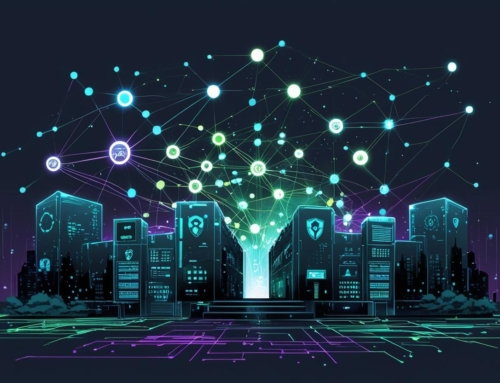Your web browser is your primary connection to the internet, and multiple applications may rely on your browser, or elements within your browser, to function. This makes the security settings within your browser even more important. Many web applications try to enhance your browsing experience by enabling different types of functionality, but this functionality might be unnecessary and may leave you susceptible to being attacked. The safest policy is to disable the majority of those features unless you decide they are necessary. If you determine that a site is trustworthy, you can choose to enable the functionality temporarily and then disable it once you are finished visiting the site.
Browsers have different security options and configurations, so familiarize yourself with the menu options, check the help feature, or refer to the vendor’s web site. While every application has settings that are selected by default, you may discover that your browser also has predefined security levels that you can select. Each web browser is different, so you may have to look around.
Ideally, you would set your security for the highest level possible. However, restricting certain features may limit some web pages from loading or functioning properly. The best approach is to adopt the highest level of security and only enable features when you require their functionality.
What do the different terms mean?
Different browsers use different terms, but here are some terms and options you may find:
- Zones: Your browser may give you the option of putting web sites into different segments, or zones, and allow you to define different security restrictions for each zone.
For example, Internet Explorer identifies the following zones:
- Internet: This is the general zone for all public web sites. When you browse the internet, the settings for this zone are automatically applied to the sites you visit. To give you the best protection as you browse, you should set the security to the highest level.
- Local intranet: If you are in an office setting that has its own intranet, this zone contains those internal pages. Because the web content is maintained on an internal web server, it is usually safe to have less restrictive settings for these pages. However, some viruses have tapped into this zone, so be aware of what sites are listed and what privileges they are being given.
- Trusted sites: If you believe that certain sites are designed with security in mind, and you feel that content from the site can be trusted not to contain malicious materials, you can add them to your trusted sites and apply settings accordingly. You may also require that only sites that implement Secure Sockets Layer (SSL) can be active in this zone. This permits you to verify that the site you are visiting is the site that it claims to be. Even if you trust them, avoid applying low security levels to external sites—if they are attacked, you might also become a victim.
- Restricted sites: If there are particular sites you think might not be safe, you can identify them and define heightened security settings. Because the security settings may not be enough to protect you, the best precaution is to avoid navigating to any sites that make you question whether or not they’re safe.
To increase functionality or add design embellishments, web sites often rely on scripts that execute programs within the web browser. This active content can be used to create “splash pages” or options like drop-down menus. Unfortunately, these scripts are often a way for attackers to download or execute malicious code on a user’s computer.
- Plug-ins– Sometimes browsers require the installation of additional software known as plug-ins to provide additional functionality. Like Java and ActiveX controls, plug-ins may be used in an attack, so before installing them, make sure that they are necessary and that the site you have to download them from is trustworthy.
- JavaScript: is just one of many web scripts and is probably the most recognized. Used on almost every web site now, JavaScript and other scripts are popular because users expect the functionality and “look” that it provides, and it’s easy to incorporate. However, because of these reasons, attackers can manipulate it to their own purposes. A popular type of attack that relies on JavaScript involves redirecting users from a legitimate web site to a malicious one that may download viruses or collect personal information.
- Java and ActiveX controls– Different from JavaScript, Java and ActiveX controls are actual programs that reside on your computer or can be downloaded over the network into your browser. If executed by attackers, untrustworthy ActiveX controls may be able to do anything on your computer that you can do (such as running spyware and collecting personal information, connecting to other computers, and potentially doing other damage). Java applets usually run in a more restricted environment, but if that environment isn’t secure, then malicious Java applets may create opportunities for attack as well.
JavaScript and other forms of active content are not always dangerous, but they are common tools for attackers. You can prevent active content from running in most browsers, but realize that the added security may limit functionality and break features of some sites you visit. Before clicking on a link to a web site that you are not familiar with or do not trust, take the precaution of disabling active content.
These same risks may also apply to the email program you use. Many email clients use the same programs as web browsers to display HTML, so vulnerabilities that affect active content like JavaScript and ActiveX often apply to email. Viewing messages as plain text may resolve this problem.
You may also find options that allow you to take the following security measures:
- Manage cookies– You can disable, restrict, or allow cookies as appropriate. Generally, it is best to disable cookies and then enable them if you visit a site you trust that requires them
- Block pop-up windows– Although turning this feature on could restrict the functionality of certain web sites, it will also minimize the number of pop-up ads you receive, some of which may be malicious
What are cookies?
When you browse the Internet, information about your computer may be collected and stored. This information might be general information about your computer (such as IP address, the domain you used to connect (e.g., .edu, .com, .net), and the type of browser you used). It might also be more specific information about your browsing habits (such as the last time you visited a particular web site or your personal preferences for viewing that site).
Cookies can be saved for varying lengths of time:
- Session cookies: store information only as long as you’re using the browser; once you close the browser, the information is erased. The primary purpose of session cookies is to help with navigation, such as by indicating whether or not you’ve already visited a particular page and retaining information about your preferences once you’ve visited a page.
- Persistent cookies: are stored on your computer so that your personal preferences can be retained. In most browsers, you can adjust the length of time that persistent cookies are stored. It is because of these cookies that your email address appears by default when you open your Yahoo! or Hotmail email account, or your personalized home page appears when you visit your favorite online merchant. If an attacker gains access to your computer, he or she may be able to gather personal information about you through these files.
To increase your level of security, consider adjusting your privacy and security settings to block or limit cookies in your web browser. To make sure that other sites are not collecting personal information about you without your knowledge, choose to only allow cookies for the web site you are visiting; block or limit cookies from a third-party. If you are using a public computer, you should make sure that cookies are disabled to prevent other people from accessing or using your personal information.
References: Mindi McDowell, Jason Rafail; https://www.us-cert.gov/ncas/tips/ST05-001; https://www.us-cert.gov/ncas/tips/ST04-012.
Photo: https://www.google.it/search?rlz=1C1CHBF_enIT767IT767&biw=1581&bih=772&tbm=isch&sa=1&ei=1aImWsPHD5KvkwWzxpugCw&q=web+security&oq=web+security&gs_l=psy-ab.3..0j0i30k1l9.6824.10024.0.10102.12.8.0.4.4.0.98.577.8.8.0….0…1c.1.64.psy-ab..0.12.633…0i67k1j0i10k1.0.8NRVAXCPCP0#imgrc=RfGU5oi31aKNAM:







